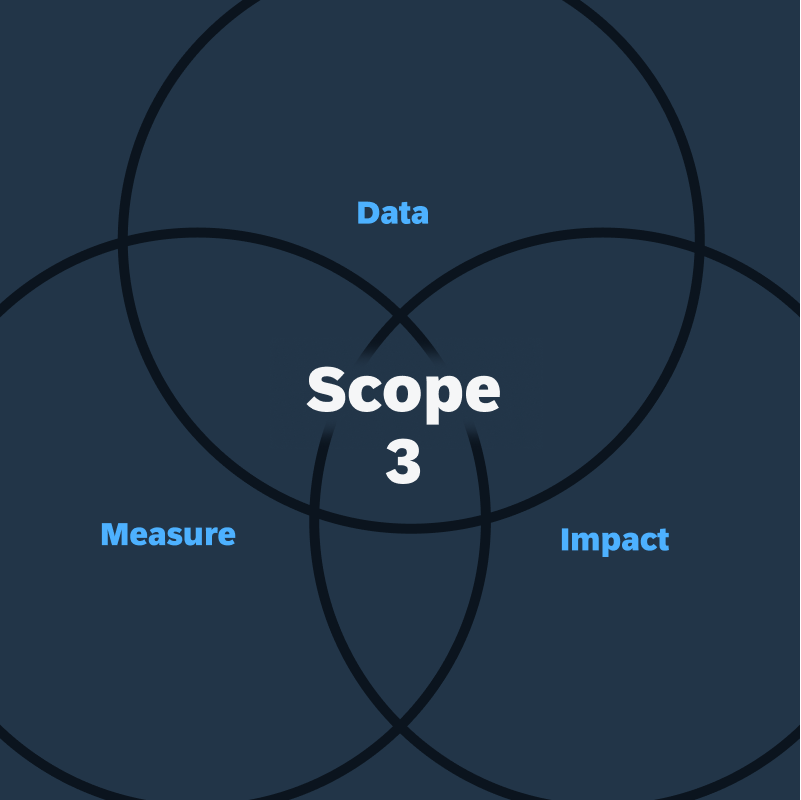Scope 3 emissions from a company’s value chain are a critical part of measuring an organisation’s overall impact on the environment
If you’re familiar with carbon emissions, you may have heard of Scopes 1 and 2.
Scope 1 refers to direct carbon emissions created as a result of an organisation’s activities, such as manufacturing and transportation.
Scope 2 refers to indirect carbon emissions created as a result of the organisation’s energy use, such as from electricity and other sources.
Both scopes 1 and 2 are part of the Greenhouse Gas Protocol (GHG), which was created by the World Resources Institute (WRI) and the World Business Council for Sustainable Development (WBCSD).
But what about Scope 3? Scope 3 refers to indirect carbon emissions outside an organisation’s control but still related to its activities, such as upstream supply chain emissions. This includes contracted suppliers creating products for your organisation.
Why is it important to track Scope 3 emissions?
- The importance of data: Data is the first step to accomplishing any goal. Before reducing your carbon emissions, it’s important to know how much they are and where they come from. That way, you won’t be wasting time and money on initiatives that don’t have a big impact.
- Scope 3 is more impactful: A company’s total emissions are usually mainly comprised of Scope 3 emissions (80 per cent or more). This fact alone makes accurately measuring Scope 3 emissions essential in an effort to reduce a company’s overall carbon footprint.
- Scope 3 is hard to measure: Scope 1 and 2 emissions are easier to track because the company has direct control over the processes that generate them (such as production). On the other hand, Scope 3 emissions stem from external sources like suppliers and customer use of products, which makes them more challenging to measure.
Recent approaches to collecting and tracking data
Most companies are required to disclose certain aspects of their carbon footprint through the Environmental Protection Agency’s Greenhouse Gas Reporting Program (GHGRP). Similarly, all publicly traded companies in the US must disclose information regarding their impact on the environment in SEC filings, including statements about climate change risks, in accordance with Regulation S-K Item 101(c)(1) and 101(h).
While most organisations comply with public reporting requirements simply because they’re obligated to do so, there has also been an increasing push for voluntary sustainability reporting. Companies are going above and beyond what law requires to report on how they manage greenhouse gas emissions from their entire value chain, known as Scope 3 emissions.
By doing this and making it part of ongoing business operations, organisations can help build trust with stakeholders who care about sustainability issues such as human rights and corporate social responsibility.
How blockchain can be used to collect and track Scope 3 emissions
Blockchain is a digital ledger that uses cryptography to record transactions in blocks of information. These blocks are linked together in a chain, and each block contains the time-stamped data and a reference to the previous block.
Once a transaction is recorded and added to the blockchain, it cannot be altered retroactively without changing all subsequent blocks, which is virtually impossible. What this means for companies looking to collect emission data from their suppliers is that once data has been committed to the blockchain, it cannot be changed or tampered with by any party except those with permission.
Accurate measurement of Scope 3 emissions to reduce carbon footprint
Scope 3 emissions, or indirect emissions from a company’s value chain, are a critical part of measuring an organisation’s overall impact on the environment. From employee travel to your company’s packaging and supply chain practices, Scope 3 emissions add up quickly and can be difficult to track.
Take the example of a consumer goods company: The packaging it uses for its products is made by another supplier, and then that packaging travels through various distribution centres before it reaches retail stores or your home.
In this case, the consumer goods company has Scope 3 emissions because they didn’t directly source the materials used in their packaging or emit the gases associated with transporting them to their final destination.
However, despite not being directly responsible for these actions, this information can still help them more accurately measure their carbon footprint and make more informed decisions about how to reduce it in the future.
In fact, Scope 3 contributes to more than 80 per cent of many organisations’ total carbon footprints. Tracking as much data as possible on an immutable blockchain ledger will ensure that everyone involved in bringing people goods and services from companies and suppliers all the way down to consumers can be held accountable for reducing their environmental impact efficiently and cost-effectively.
How GreenToken by SAP can help
GreenToken enables you to participate in a private, permissioned blockchain solution for tracking Scope 3 carbon emissions. The network comprises trusted members, suppliers, customers, manufacturers or other partners. This can be used to support the sustainability and carbon footprint accounting and reporting needs of an entire industry, providing better data accuracy as well as reduced costs and time delays in processing.
Why a private network? Blockchain is a shared ledger system with multiple participants across nodes connected by a peer-to-peer network. In some cases, companies may not want to share their data publicly due to security concerns.
In such cases, they need an option where everyone on the network has access, but not everyone can read or write information from it. A private blockchain provides this type of confidentiality and also makes sure that only authorised people are able to join the network with proper permissions.
With this type of architecture in place, enterprise users will have more control over who sees what information while maintaining transparency between all parties involved since they are part of one shared ledger system.
Another benefit of using a private blockchain is the low carbon footprint, which is comparable to conventional databases. This is unlike the large footprint of public blockchains, which make them unfit for the purpose of tracking carbon emissions.
Source: e27











